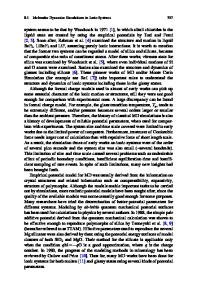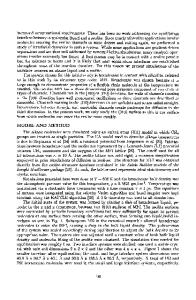Molecular dynamics simulations of surface oxidation and of surface slip irreversibility under fatigue in oxygen environm
- PDF / 1,008,775 Bytes
- 15 Pages / 584.957 x 782.986 pts Page_size
- 105 Downloads / 315 Views
rca) Laboratoire des Solides Irradiés, Centre National de la Recherche Scientifique, Commissariat á l’Énergie Atomique et aux Énergies Alternatives, École Polytechnique, Université Paris-Saclay, Palaiseau 91128, France
Maxime Sauzay Directions Énergie Nucléaire, Département des Matériaux Nucléaires, Service de Recherche de Métallurgie Appliquée, Commissariat á l’Énergie Atomique et aux Énergies Alternatives, Université Paris-Saclay, Gif sur Yvette 91190, France
Boubakar Diawara Institut de Recherche de Chimie Paris, Chimie ParisTech, Centre National de la Recherche Scientifique, Paris Sciences & Lettres Research University, Paris 75005, France
Adri C.T. van Duin Department of Mechanical and Nuclear Engineering, Pennsylvania State University, Pennsylvania 16801, USA (Received 1 May 2017; accepted 7 September 2017)
Atomistic simulations are carried out to analyze the influence of oxygen environment on nickel and copper surface roughness and notch initiation. The early stages of oxidation of nickel and copper surfaces are first simulated and compared with experimental observations. Various oxygen superstructures observed on metal surfaces are reproduced as well as the nucleation of small NiO embryos. Nickel and copper surface oxidation mechanisms are different and different “oxide” nano layers are formed. None of these superficial nano layers has a major influence on the mechanical behavior of surface slips as they do not change the surface roughness fatigue evolution and micro-notch production. These atomistic results agree with experimental studies which report similar development of persistent slip band surface relief in inert and in air environment. A general model for the estimation of surface slip irreversibility is also provided and the models of environment-assisted surface relief evolution and microcrack initiation are revisited.
I. INTRODUCTION
Fatigue is one of the most damaging mechanisms for metals and alloys. Fatigue damage generally starts at free surfaces in ductile single-phase metals from the accumulation of unreversed slip steps due to dislocation glide. The glide irreversibility can be characterized by the fraction p of irreversible plastic slip per cycle compared with the total plastic slip.1 The smaller or larger values of p, between 0 and 1, can be related to longer or shorter fatigue lives, respectively. Analytical models found in the literature generally estimate p on the sole basis of dislocation motions in the bulk and neglect surface mechanisms.2,3 Yet, direct experimental surface Contributing Editor: Gunther Eggeler a) Address all correspondence to this author. e-mail: [email protected]. DOI: 10.1557/jmr.2017.400
measurements of p in air provide a larger factor value than the ones estimated by bulk analytical models.4 Atomistic simulations of surface irreversibility should be able to bring important information on these matters and help to compare behaviors in inert and in air environments. For instance, a recent molecular dynamics study of the surface slip irreversib
Data Loading...











